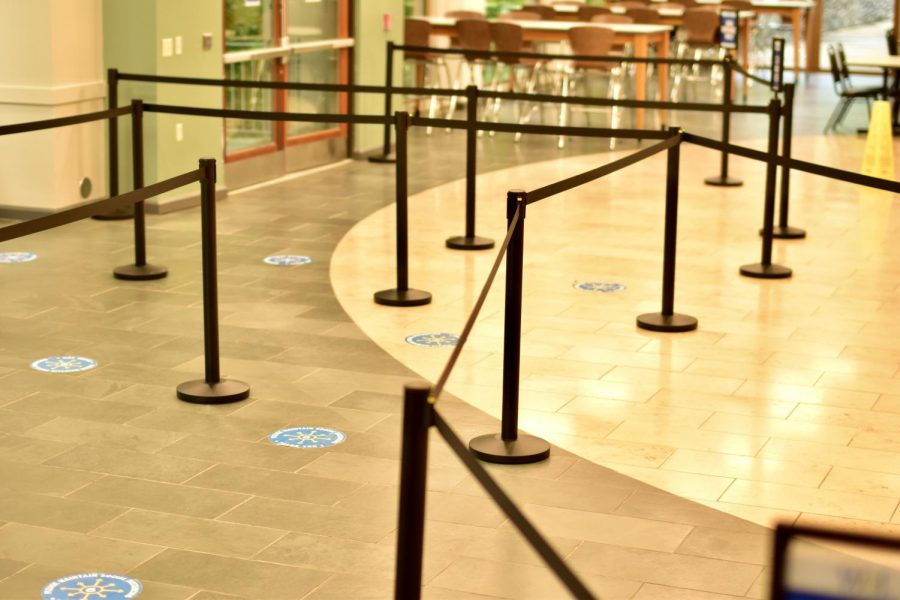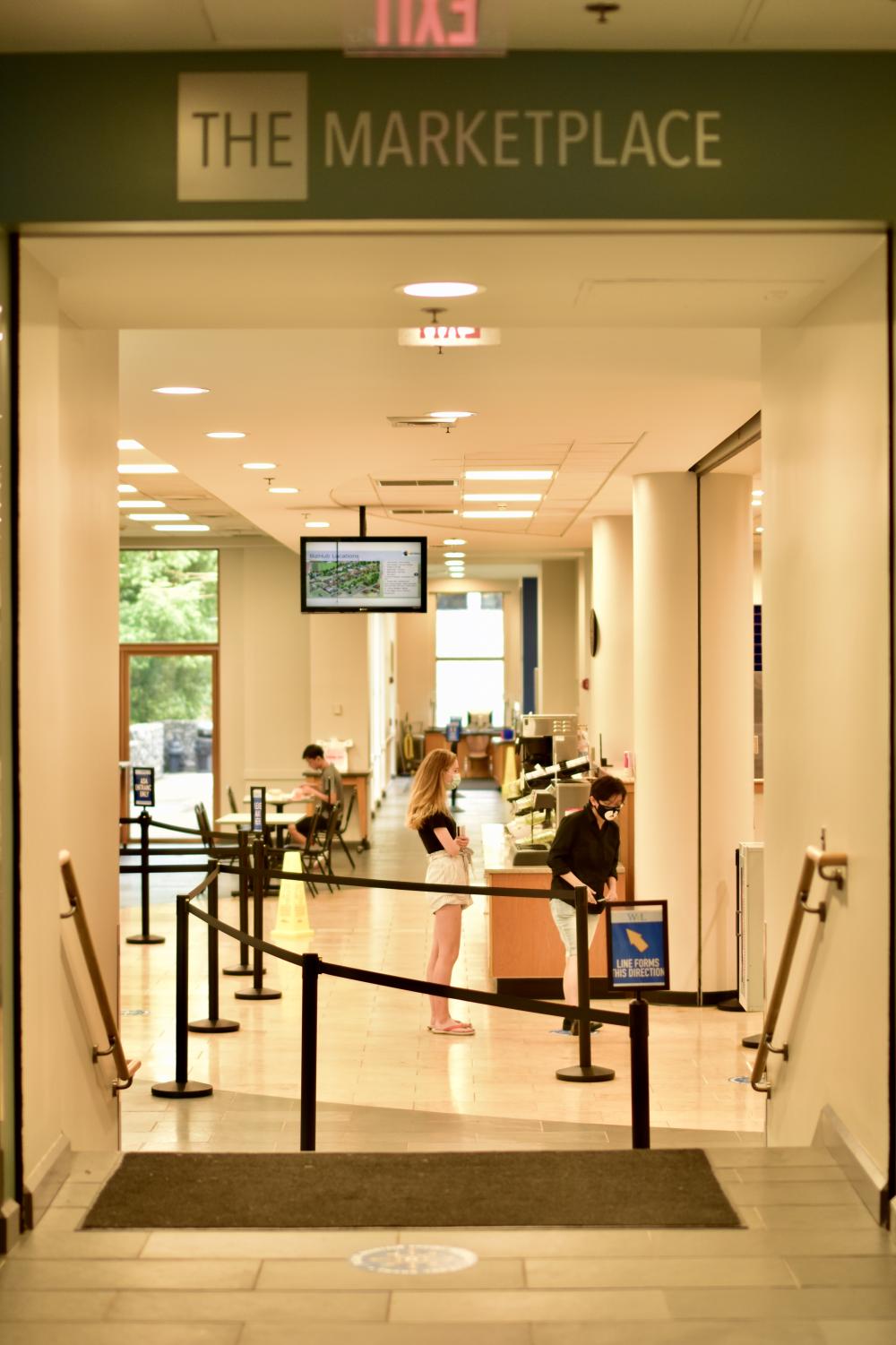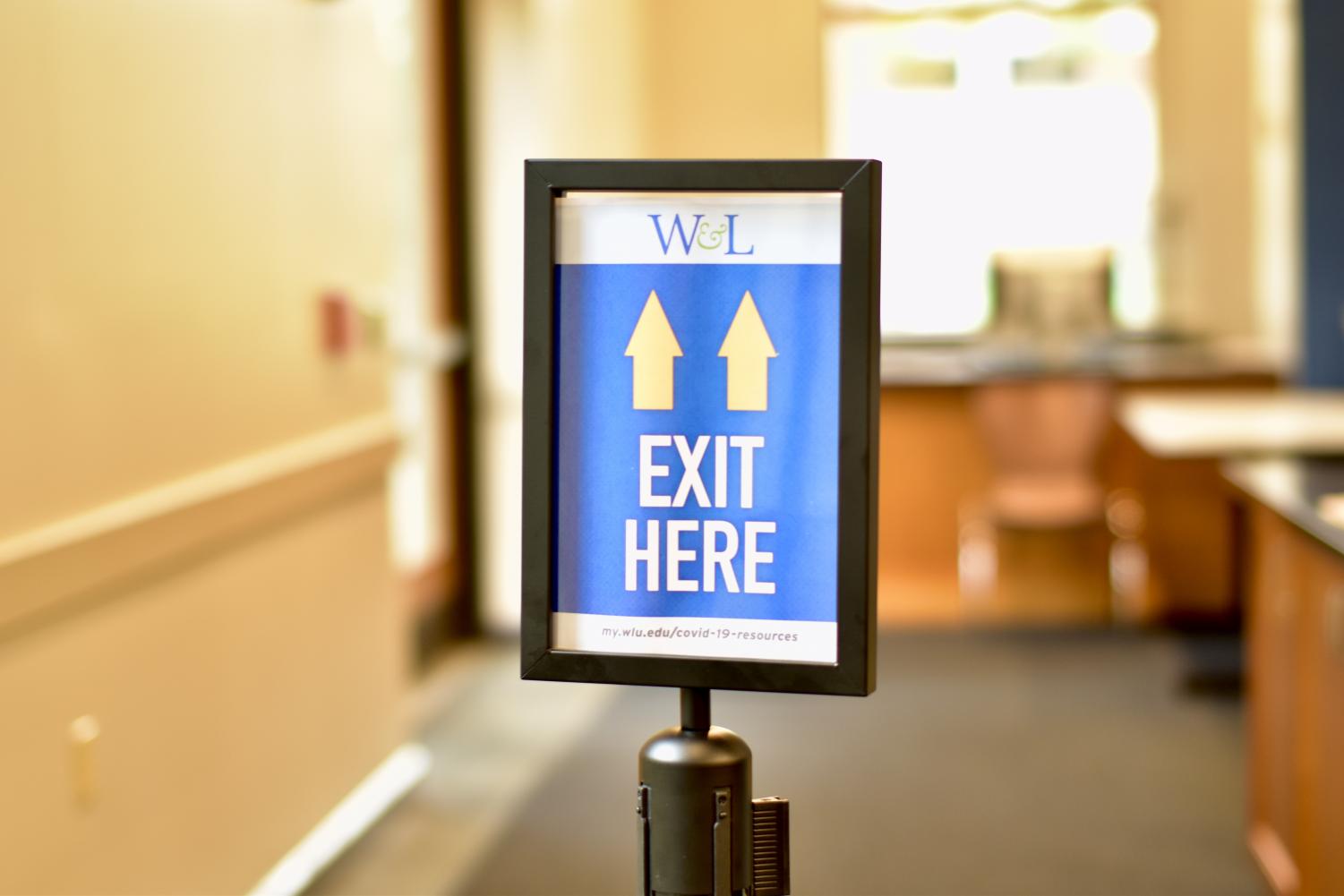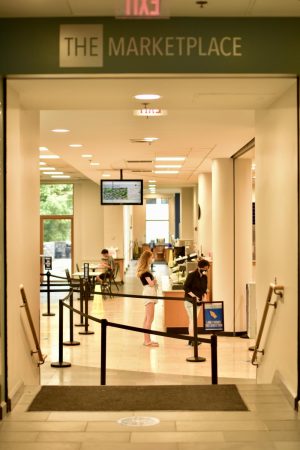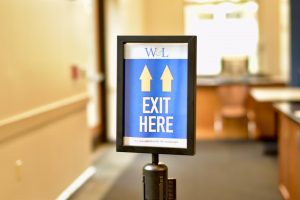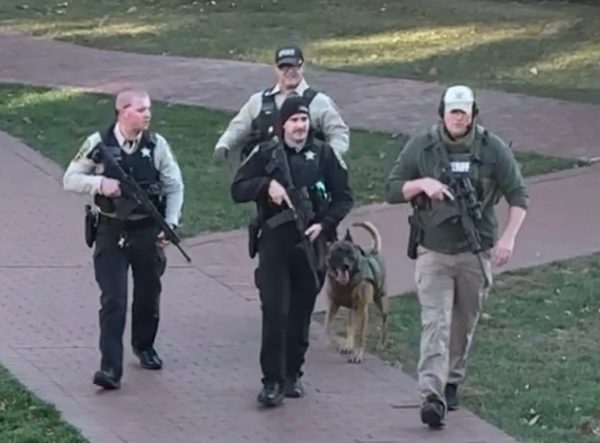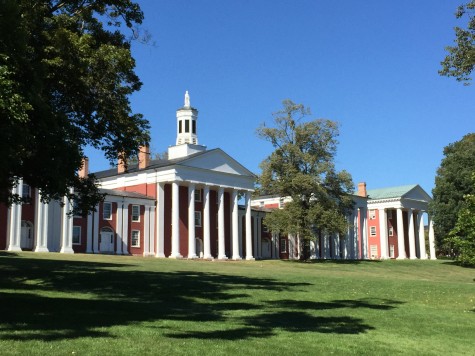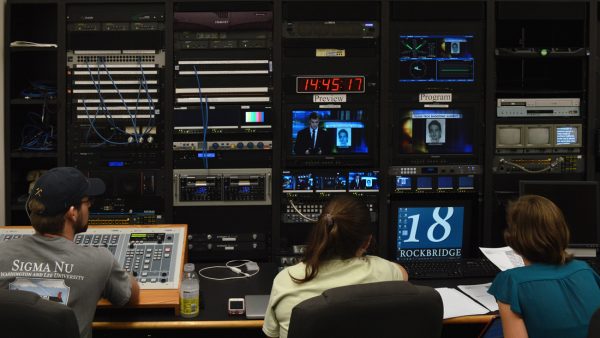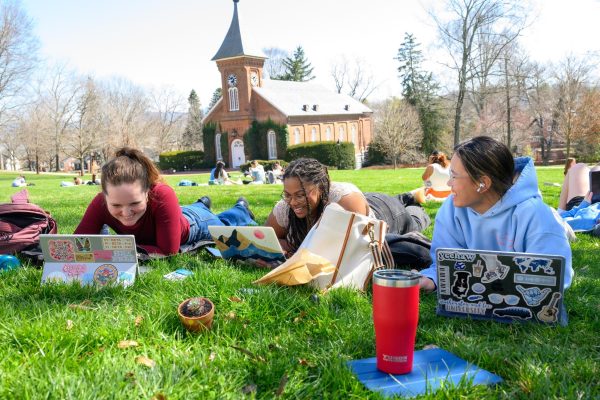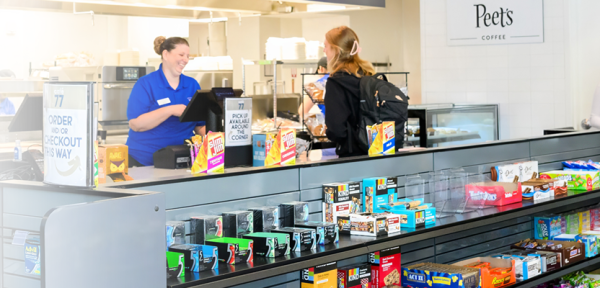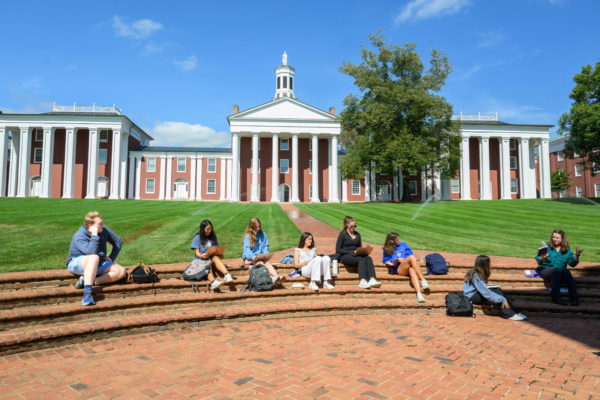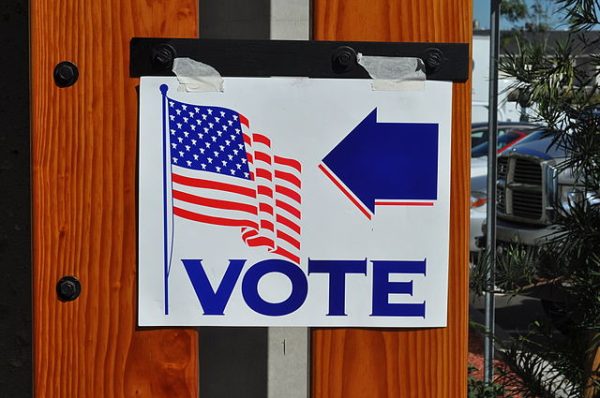D-hall with a side of coronavirus
Ropes and signs facilitate social distancing while students wait in line.
September 10, 2020
Our university’s biggest social distancing weakness is dinnertime. Our relationships with fellow students build a strong campus community. But we may end up with less people in that community if we don’t give each other personal space in the D-Hall line.
An average 6 p.m. view from the Marketplace’s dinner line gets worse the longer you look. Students behave well once on the pre-marked social distancing dots. There’s minimal pushing ahead or shortening up the lines.
But social distancing stops where the dots and rope barriers end. At peak eating times, the inexorable pressure of hungry students pushes everyone closer as the line snakes up Elrod Commons’ main stairs. Six feet apart drops to four or two. The same people stand together for the 10 minutes it can take for the line to creep downstairs.
This isn’t social distancing and it isn’t unique to the Marketplace.
At Foodside and Fieldside, spacing in line is acceptable until students spill out into the courtyard. People grabbing pickup orders mingle in Fieldside’s small waiting area. Students eating at Café 77 form crowded lines on the porch of Elrod Commons. The E. Café has students at the end of the line clogging up the hallway and the pickup area fills rapidly.
I’ve seen other students sharing the same social distancing dot at least once in every restaurant I’ve been to. The twin troubles of overflowing lines and packed waiting areas are common. Each dining space on campus is a sad new variation on the same theme.
Lines aside, the indoor dining options don’t inspire confidence. The people who aren’t allowed to visit others’ rooms can sit at the same table in the Marketplace or Evans Hall. Seats at the tables are not six feet apart. And of course, you have to remove your mask while eating.
None of these social distancing woes are inherently the fault of dining staff, students or the university. The dining system was built for times when close contact is permissible and there have been considerable efforts to improve it.
But the current precautions enable unsafe conditions – and that can’t continue.
Far more students travel through dining hall traffic jams than attend irresponsible parties. Partying is reckless and unjustifiable. But the spectacle of unsafe partying draws much more attention than grabbing your lunch. The less dramatic problem affects more people every day yet is overlooked in favor of anti-partying enforcement.
The socially distanced dining system can’t handle peak demand. Many eateries on campus are compliant at unpopular hours and overflowing at mealtimes. Barriers and the end of self-serve dining disrupt the natural ebb and flow of students that the Marketplace used to handle well.
There are many routes to improving our everyday lines and lives. The social distancing barriers and dots should be extended in food serving locations. Closing indoor dining areas might be necessary – which is one way some places could expand their socially distanced line capacity.
Maybe we should determine if calling ahead or online ordering is possible, and what places it is possible for. Administration could consider regulating scheduled dining times and locations. We can’t leave such a massive gap in our school safety unfilled.
Every Washington and Lee student has a duty to stay socially distanced and keep their classmates safe. The vast majority of people I’ve seen are taking COVID-19 seriously. People I know are taking uncomfortable distanced lab sections and sacrificing in-person learning. I’m in Cantatrici, and we practice singing through KN95 masks.
Individual responsibility is not the whole story. Some of the systems we’re living in make exercising that responsibility difficult. The administration needs to act now, make rule-breaking behavior unattractive and help us stay safer as a community.
We need help from administration, more consideration for our fellow students… and more dots.



